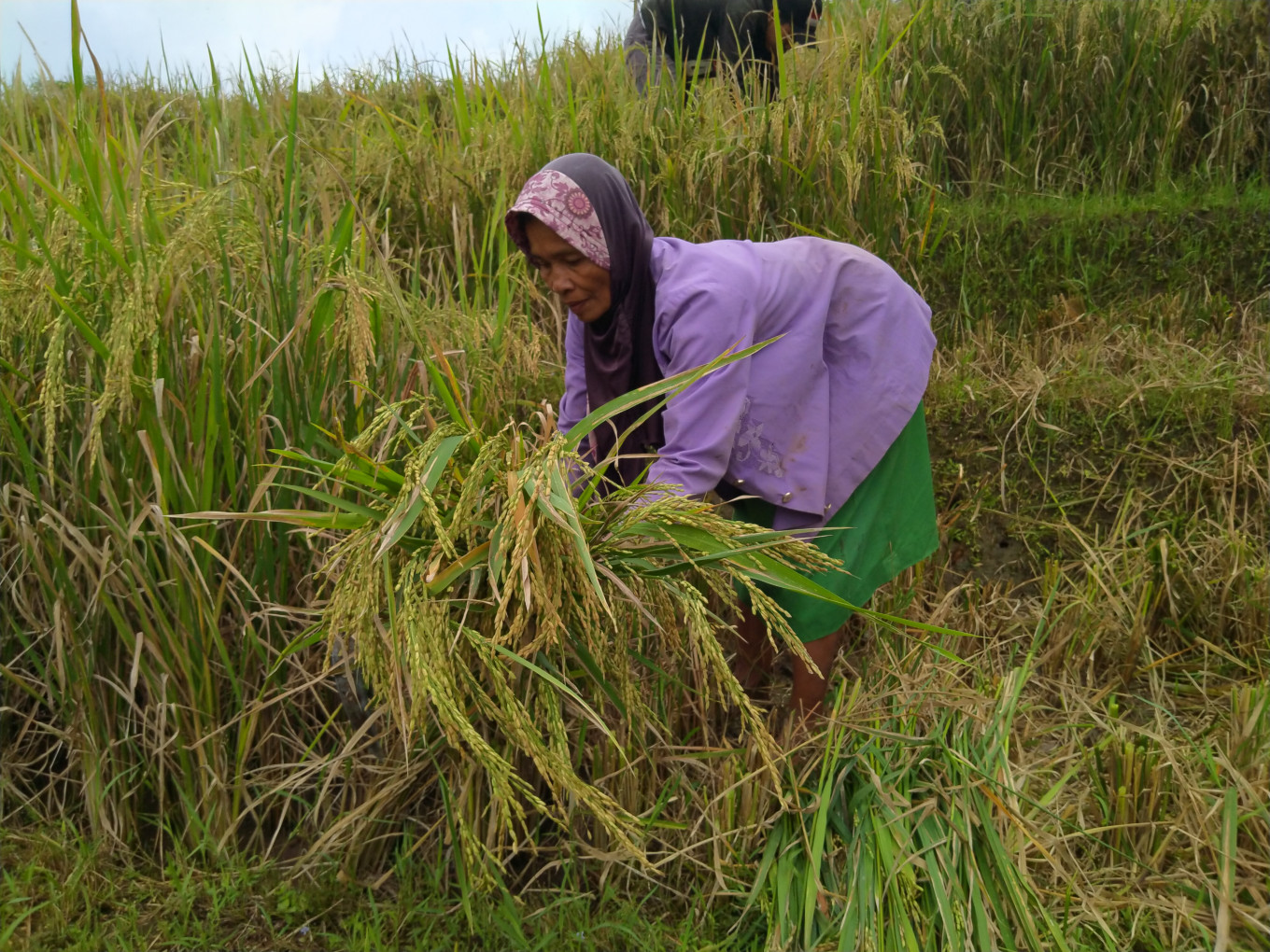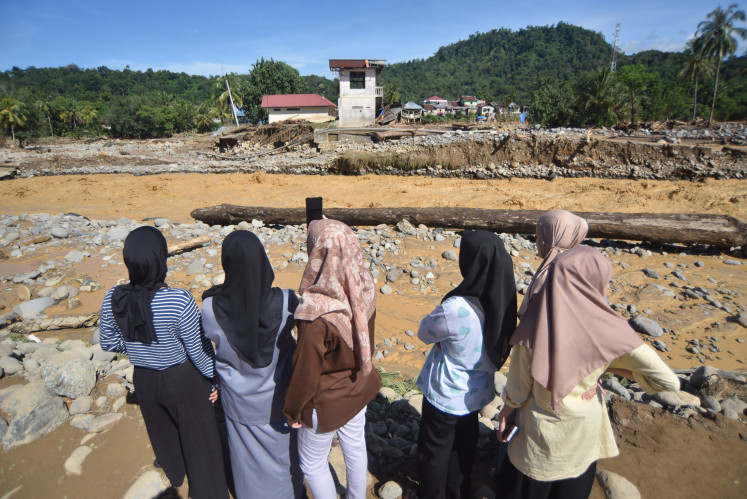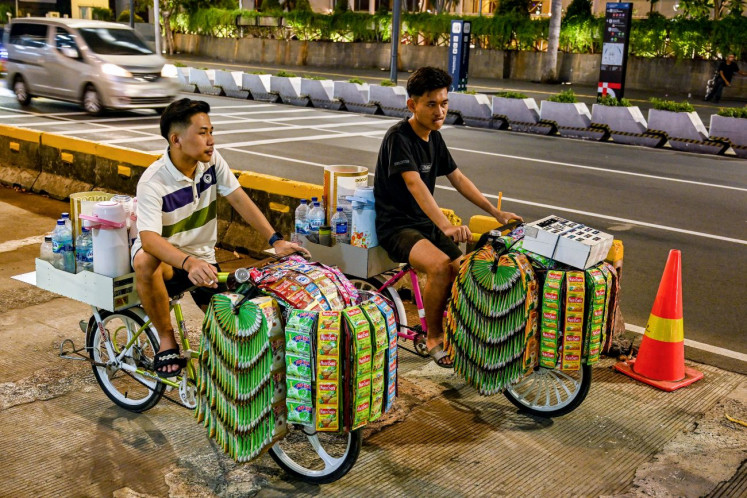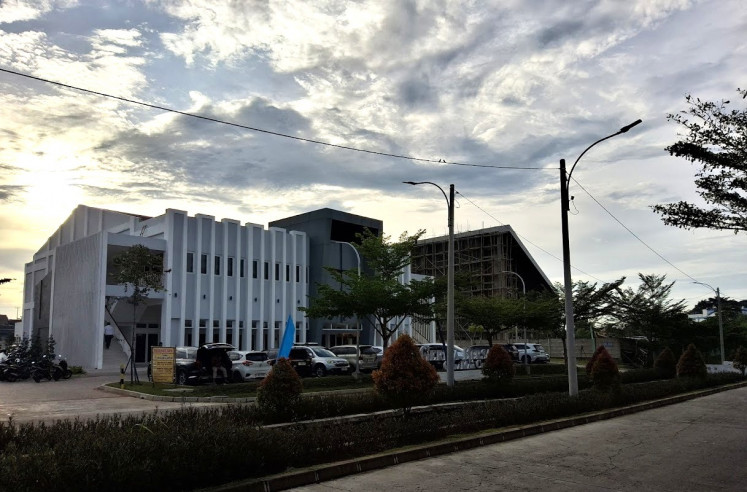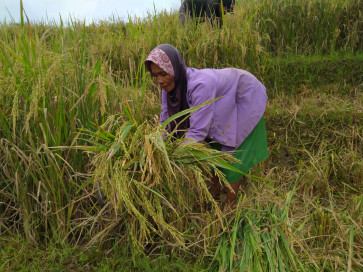Popular Reads
Top Results
Can't find what you're looking for?
View all search resultsPopular Reads
Top Results
Can't find what you're looking for?
View all search resultsRethinking women’s roles in Indonesian agriculture
On average, women working in agriculture, forestry and fisheries earn Rp 1.44 million (US$101) per month, which is 33.75 percent less than their male counterparts.
Change text size
Gift Premium Articles
to Anyone
T
he International Day of Rural Women on Oct. 15 was observed by many agricultural and women organizations across the world. In Indonesia, however, it was a rather “silent celebration”. Does this reflect the ignorance of the role of women in agriculture in Indonesia?
This year’s rural women’s day took the theme of “Rural Women Cultivating Good Food for All”. Initiated by the United Nations General Assembly in its resolution 62/136 of Dec. 18, 2007, this international day acknowledges that the role of rural women is central in ensuring food and nutrition security for their children, households and communities. Rural women’s participation in economic activities also contributes to the development of rural economies, and therefore, local and global economies.
Yet, rural women and girls persistently face systemic challenges such as significant barriers to access resources and services, from access to land, farm assets, agricultural production inputs and technology, market information and healthcare, to education and training opportunities. Furthermore, during times of hardship, rural women and girls are often disproportionately hit. UN Women reported that in 2019 and 2020, women lost more 54 million jobs, representing a 4.2 percent decline in women’s employment compared to 3 percent decline in men’s employment.
The gender discourse in agriculture is obviously applicable to Indonesia. According to the Women's Empowerment and Child Protection Ministry's Profile of Indonesian Women (PIW) 2020, 24.79 percent of women work in the agriculture sector, making it the biggest employment sector for women. Despite this high female participation, agriculture continues to be seen as a male-dominated industry. Furthermore, women earn less than men, a lot less. Referring to the PIW 2020, on average women working in agriculture, forestry and fisheries earn Rp 1.44 million (US$101) per month, which is 33.75 percent less than their male counterparts.
There have been efforts toward improving the role of women in Indonesian agriculture. The Agriculture Ministry was recently awarded the 2020 Anugerah Parahita Ekapraya award by the Women's Empowerment and Child Protection Ministry for its commitment to implementing gender mainstreaming to optimize agricultural development. The Agriculture Ministry has also worked closely with the Female Farmer chapter of the Indonesian Farmers Association (HKTI). Yet, more can and should be done.
Gender mainstreaming is a good start to acknowledge the different implications of policy and programs across genders. However, central to our resolve is the need to address leadership issues. We do not have enough female leaders in Indonesia. To address women's issues, women should not only be target recipients, but also take part and even lead decision-making processes.
We see too many webinars with all-male panels (manels) talking about issues such as (ironically) sustainable development in Indonesia. This definitely should stop. Solutions to gender issues need men’s contribution too, but women’s voices should be well-represented.

